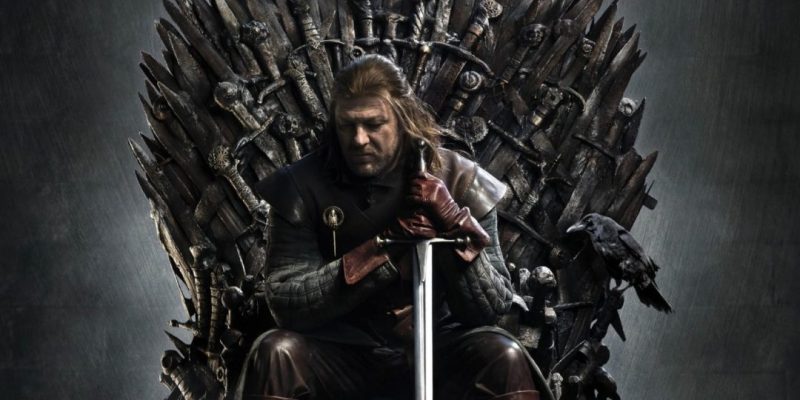Attempting to impose a singular unifying narrative across a huge swathe of media while extrapolating broad trends from a handful of data points is always a precarious and risky endeavor, and more so across an entire decade. However, what is particularly interesting about the 2010s as a decade is the way in which this seemed to intuitively understood. The 2010s were the decade of “content” — of media production on a scale previously unimaginable. There was so much stuff that it was either impossible or all too easy to divine patterns from the mass of multimedia storytelling presented to audiences.
In 2009, 521 movies were theatrically released. In 2018, the number of theatrical releases climbed to 871 – a figure that doesn’t include films released through non-theatrical channels like streaming services. In 2009, there were 211 scripted television shows. In 2018, the number of scripted television shows soared to 495. It isn’t just “peak TV;” this is the era of “peak content.”
A decade ago, Paul Schrader argued this doesn’t just affect producers, but consumers. “Take a media-aware person of, say, 30 years of age,” suggested the writer of Taxi Driver and 2009’s First Reformed. “When Ollie’s great-grandfather was 30, he had perhaps seen 2,500 hours of audio-visual narrative. His grandfather, age 30, had seen about 10,000 hours. His father had seen 20,000 hours. Ollie in 2009, age 30, has seen approximately 35,000 hours of audio-visual narrative.”
It isn’t just the film production that is changing. The decade has seen an explosion of accessibility that is arguably even more significant than the advent of home media in the last decades of the twentieth century. Now, anybody with internet access and a debit card can legally watch Star Wars or Raiders of the Lost Ark with the click of a button — and maybe a few more without the card.

Most modern audiences have seen most archetypal stories played out. While there are obviously some severe access issues for more marginalized titles buried in the backlog, most of the big and iconic stories are more accessible to modern media-savvy audiences than at any point in history. Audiences no longer have to wait for a theatrical re-release or for the Disney Vault to open.
It is cliché to suggest that there are only a finite number of basic story templates. Indeed, a large number of the breakout hits of the decade succeeded by finding new ways to tell older stories, often by foregrounding the kinds of characters and actors often excluded from them: The Force Awakens, Black Panther, Captain Marvel, Wonder Woman, etc.
The breakout media of the past decade also has generally assumed a much stronger degree of media literacy from audiences than they might have in previous decades. Storytellers feel increasingly comfortable assuming that audiences understand how stories work, and they can build from there.
This is obvious even looking at the most conventional and conservative storytelling engines of the past decade. With notable exceptions like Iron Man 3 or Thor: Ragnarok, Marvel Studios produces fairly strait-laced and standard blockbuster narratives. However, even those films are punctuated with self-aware irreverent humor that acknowledges how familiar many of these tropes are.
It’s notable that the decade saw the emergence of what might be called “remix” storytelling. Some of these projects — like Adam McKay’s Vice or Alena Smith’s Dickinson — told conventional stories in unconventional ways. Others — like Damon Lindelof’s Watchmen or Greta Gerwig’s Little Women — offered new takes and approaches to classic texts to find something fresh.

To pick an obvious example, Spider-Man: Into the Spider-Verse assumes that audiences have seen enough superhero origin stories that it can efficiently and effectively blitz through six of them. It also understands that audiences can skillfully recognize a basic sympathetic villain origin that they only need to hit the bullet points.
All of these examples assume that the audience has at least a passing familiarity with the mechanics of the kind of stories being told. That is how these modern stories work, built on the audience’s understanding of how the familiar templates are supposed to operate so they might comprehend the importance of the changes that these modern stories are making.
Game of Thrones became the watercooler television series of the decade. It didn’t do this by adhering rigidly to the archetypal hero’s journey or the trappings of fantasy narratives. It did this by offering twists and subversions that assumed the audience’s passive understanding of how these stories were supposed to work in order to catch them off guard.
All of this was based on an assumption that mass audiences had devoured Peter Jackson’s Lord of the Rings trilogy a decade earlier and through that understood the archetypal epic fantasy narrative. It’s notable that attempts at straighter fantasy epics during the decade — such as Jackson’s subsequent Hobbit trilogy — failed to latch on to audiences’ attention in the same way that Game of Thrones did.
Game of Thrones killed its apparent protagonist in the penultimate episode of the first season and would often brutally butcher entire sections of the ensemble cast. In its final season, it polarized audiences by leaning into its most audacious twist, revealing that one of the show’s deuteragonists was not a heroic illustration of the divine right of kings, but instead a brutal conqueror.
These changes aren’t exclusive to media on prestige cable networks. Steven Moffat’s work on Doctor Who and Sherlock similarly hinges on the audience’s understanding of how particular narratives are supposed to unfold, followed by playing with and challenging those assumptions — asking why these stories have been told in the way that they have, focusing on the characters and beats that they do.

On Doctor Who, Moffat engaged with the series’s longstanding treatment of its supporting cast of largely female companions, in particular its refusal to treat them as truly equal to the series’s (to that point, exclusively) male leads. On Sherlock, Moffat explored pop culture’s fixation on the emotionally withdrawn and reckless male genius archetype.
This applies even to the most archetypal of stories. Star Wars is the most archetypal narrative in contemporary pop culture. With The Last Jedi, Rian Johnson engaged with some of the larger franchise’s core ideas, boiling them down to their essence and offering a fresh spin on a number of them. Does a chosen one need to come from a pure bloodline? If so, why? What does that say?
These types of story are as much responses to existing stories as narratives themselves. They arguably exist in a gray space between storytelling and criticism, serving both functions. The Last Jedi might have asked the audience to interrogate certain assumptions about Star Wars, but it looked absolutely gorgeous. Game of Thrones played with fantasy tropes, but it was visceral and thrilling.
Of course, it is fair to ask whether there is still room for conventional and old-fashioned storytelling amid all of this experimentation and critical engagement. There certainly is. Chris Chibnall offered a much safer and more conventional approach to Doctor Who than Steven Moffat. With The Force Awakens, J.J. Abrams offered a Star Wars narrative that was so conventional it mirrored A New Hope.
More to the point, those fans and audiences who want more conventional and more conservative narratives have easier access than ever to these classic stories. The original Star Wars films are available on Disney+ and Movies Anywhere, albeit in their remastered forms. As much classic Doctor Who as possible is available on DVD and Britbox. All of classic Star Trek is on CBS All Access and DVD.
It has been well documented that the past decade has seen an explosion in new content and access to existing media. However, the more interesting developments flow downstream from that, as creators demonstrated an increased faith in the media literacy of audiences that have grown up in this environment.
In the 2010s, creators realized that audiences had most likely seen it all before. The best of those creators understood that this meant audiences were truly willing to engage with the kind of stories being told.
